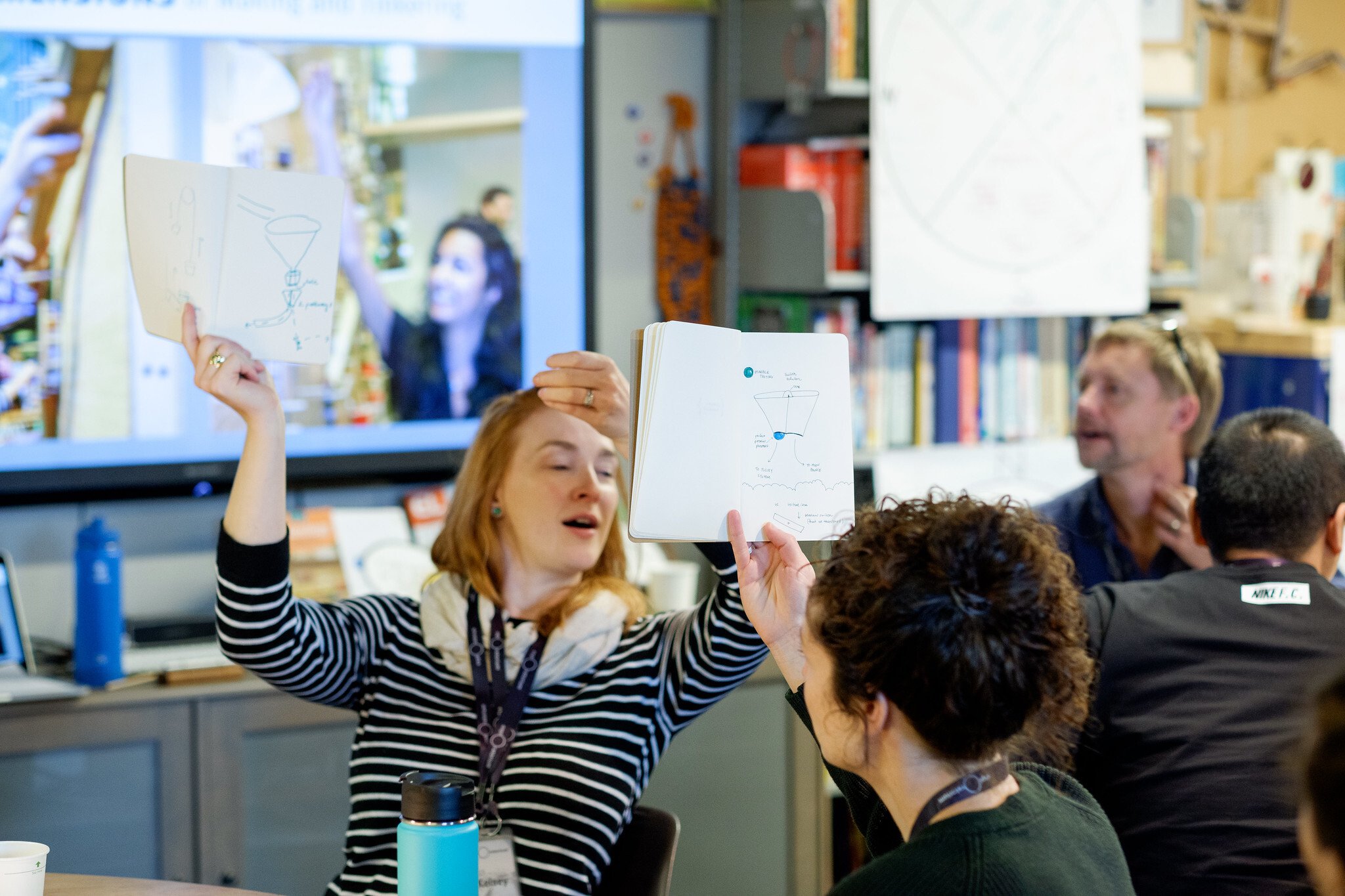Getting Started with Reflection in Tinkering Workshops
This article is part of collaborative work between Wonderful Idea Co. and The Tinkering Studio
We recently were asked by our friend and colleague Amos Blanton, to pass along some thoughts on leading discussions about tinkering activities. I thought that it would be worth it to share our responses in a slightly edited form so others can get a window into our process.
Our experience is based on leading group discussions in tinkering-based professional development workshops with educators, designers and artists. We usually make time for discussions at the beginning and end of a workshop as well as after each hands-on activity. The reflective conversations are grounded in a constructivist perspective, meaning that our goal is to support participants to create their own meaning, articulating their own thoughts and strengthen their personal understanding of the tinkering experience.
When done well, a reflective conversation can also build a sense of community that grows over time, allow ideas to cross pollinate and facilitate the process of zooming out from specific concrete moments to broader ideas about learning and teaching.
Here are a few thoughts about tinkering reflections:
We’re inspired by HGSE Project Zero thinking routines and often use them to organize discussions. These reflections can encourage thinking about the same topic with different mindsets and perspectives so that participants' excitement, concern, or urge to talk about what just happened gets addressed in an organized way.
For example, the Compass Points routine is great for that because it shifts from a first mindset of excitement to a second mindset of fears or worries and continues through different prompts. Or asking people to reflect about what they might try both "Someday and Monday” promotes both long term/blue sky thinking and the mindset to come up with concrete and practical next steps.
We try to come up with questions that are short, succinct and open-ended. Complicated questions are usually hard for both the participants and the facilitators to manage. Some examples that work well to elicit a range of relevant responses include "What was challenging about this experience?", "What was a moment you felt frustrated?", "What were you curious about during the activity?" and “what was surprising to you about the activity.”
It's great when that question refers to a shared experience so that answers are relevant to everyone in the room and a sense of togetherness can develop during the discussion. When we facilitate the discussion we are open to all ideas but try to reinforce the ones that are most connected to the tinkering philosophy that we are working to communicate.
We find it to be helpful to have different ways of responding. We usually ask everyone to write down something on their own, then share with a partner or small group and then have a large discussion. Reflections in smaller groups can be really valuable for participants when a generative starting point and some structure is provided. For example, we ask participants to share a moment of low-floor, wide-walls, or tall-ceiling they had in our workshop and discuss the examples in groups of 5 people. You can read more about this concept in Mitchel Resnick’s medium post on the topic.
The dialogue that develops among 5 people is often more valuable than the one-directional sharing that happens in a big group. The purpose of reflection is not always for everyone to hear everyone else's thoughts, but for participants to articulate and shift their thinking in response to others.
We usually start with broader prompts in the beginning of the workshop based on concrete experience and then move to more philosophical or pedagogical topics like facilitation or activity design, especially when we’re working with a group over multiple days or sessions. It’s easier to get into complex ideas after you've built a bit of shared conversation space where everyone feels comfortable. and the concrete experience provides opportunities to practice building on other’s contributions in a natural way.
And lastly, here are a couple of technical things that we think about. As a facilitator of the discussion we try to be ok with little moments of silence. We think that someone will eventually jump in and it’s better to have responses and dialog happening between participants. We try to moderate answers so that they aren't too long or too short. We sometimes ask follow up questions to encourage people to go deeper. And at the end we like to leave a little time for "anyone who hasn't had the chance to say something".
Just as we continue to tinker with materials and prompts for tinkering activities, we try to stay in a prototyping mindset when it comes to discussions. We think about which ones were most generative and interesting and constantly make adjustments and tweaks to our reflection routines



